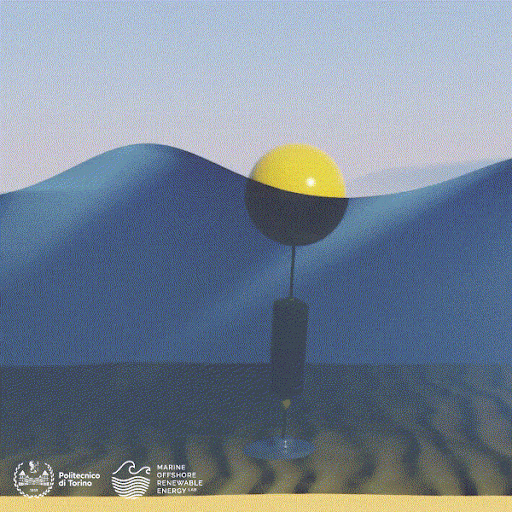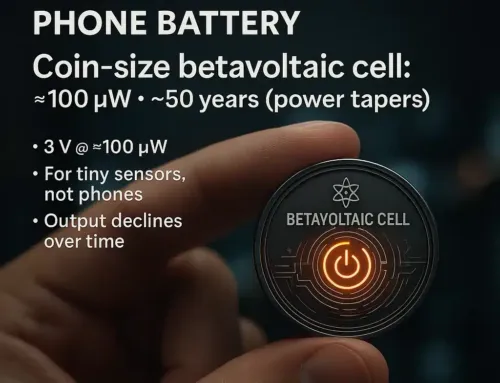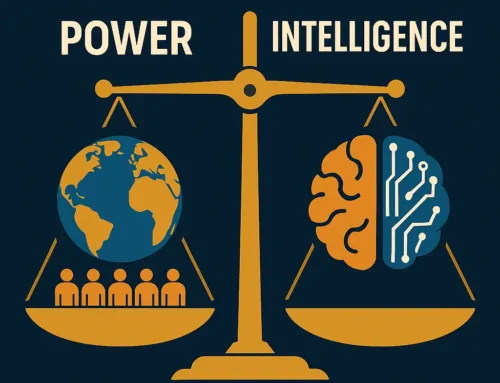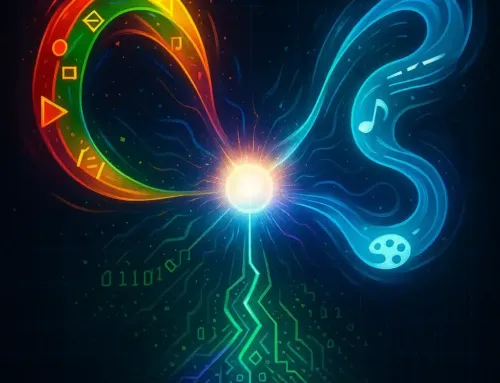
Approx. read time: 19.2 min.
Post: Harnessing Ocean Waves: The Future of Renewable Energy with Wave Energy Converters
Ocean Buoys Generating Electricity from Waves: A Promising Renewable Energy Technology
Ocean buoys that generate electricity by harnessing the power of ocean waves, also known as Wave Energy Converters (WECs), represent a promising renewable energy technology. These devices are anchored to the ocean floor and convert the kinetic energy from waves into electrical power, similar to how wind turbines harness wind energy. This article will delve into the technical aspects of how these buoys work, their energy production potential, the challenges they face, and their future prospects. Additionally, the article will explore how the integration of wave energy with other renewable energy sources, such as wind turbines and solar farms, can create a robust and sustainable energy grid.
How Ocean Buoys Generating Electricity from Waves Work

The concept is straightforward: convert mechanical energy into electrical energy, similar to what we achieved with Niagara Falls in Canada. With approximately 80% of Earth’s surface covered in water, finding suitable locations shouldn’t be a problem. Integrate solar and wind farms, and feed this renewable energy back into the grid.
- Mechanism:
- Technical Specifications: The CorPower C4 buoy, for example, utilizes an internal pneumatic cylinder that reacts to wave phases. This system converts the vertical motion of waves into rotational energy, driving a generator to produce electricity. The buoy’s design amplifies its motion, potentially boosting power generation by up to 300% compared to traditional systems. During trials, the CorPower C4 achieved peak power production of 600 kW, with potential scalability up to 850 kW [6] [7].
- Other Technologies: The OE Buoy by OceanEnergy employs a different approach by using the floating hull’s motion to pressurize air, which then drives a turbine to generate electricity. This process is analogous to an air pump, converting wave power into mechanical energy to produce electricity [8].
- Energy Conversion Systems: Advanced software and hardware systems are being integrated into these buoys to optimize energy conversion. For instance, new systems automatically adjust the resistance within the generator to match the wave conditions, thus optimizing the speed and efficiency of power generation. This technology allows the system to handle varying wave heights and conditions more effectively [7].
- Hydraulic Systems: Some WECs, like the Pelamis, use hydraulic systems to convert wave motion into electricity. The hydraulic fluid is pressurized by the wave motion, driving hydraulic motors connected to generators. This method is particularly effective for capturing energy from large, powerful waves [6].
- Direct Drive Systems: Some WECs employ direct drive systems, where the wave motion directly drives an electrical generator without the need for intermediate hydraulic or mechanical systems. This approach can reduce maintenance requirements and increase overall system efficiency [9].
- Energy Conversion:
- Hydraulic Systems: Many WECs, like the Pelamis, use hydraulic systems to convert wave motion into electricity. The hydraulic fluid is pressurized by the wave motion, driving hydraulic motors connected to generators. This method is particularly effective for capturing energy from large, powerful waves [7].
- Direct Drive Systems: Some WECs employ direct drive systems, where the wave motion directly drives an electrical generator without the need for intermediate hydraulic or mechanical systems. This approach can reduce maintenance requirements and increase overall system efficiency [9].
Energy Production and Potential
- Efficiency:
- Comparative Analysis: Wave energy converters are less mature compared to wind and solar technologies, but they offer unique advantages. For instance, wave energy has a higher energy density compared to wind, meaning that the same physical space can produce more energy. Additionally, waves are more predictable than wind, providing a more stable energy source [6] [7].
- Pilot Projects and Results: Various pilot projects around the world have demonstrated the potential of wave energy. For example, the Wave Hub project in the UK has shown that a well-designed WEC array can produce significant amounts of energy. The project aims to install multiple types of WECs to compare their performance and optimize the overall energy capture [8].
- Energy Density: Wave energy has a higher energy density compared to solar and wind energy, which means it can produce more energy in a smaller area. This makes wave energy particularly valuable in regions with limited space for renewable energy installations [7].
- Reliability and Predictability: Unlike solar and wind energy, which can be highly variable, wave energy is more predictable and consistent. This reliability makes wave energy an attractive option for balancing the power grid and ensuring a stable energy supply [9].
- Capacity:
- Global Potential: The global potential for wave energy is immense. According to the International Energy Agency (IEA), wave energy could theoretically produce up to 29,500 TWh per year, which is more than the current global electricity consumption. Countries with extensive coastlines, such as the United States, Australia, and the UK, have significant potential to harness this energy [8].
- Case Studies: In Australia, the Carnegie Wave Energy project has successfully deployed CETO units that operate underwater, converting wave motion into high-pressure water, which is then used to drive hydroelectric turbines. This project has highlighted the feasibility and efficiency of underwater wave energy systems [9].
- Regional Potential: The wave energy resource along the U.S. coastline is estimated at 2,640 terawatt-hours per year (TWh/yr), enough to power over 93,000 homes annually. This highlights the vast potential of wave energy as a renewable source [7].
Challenges and Solutions
- Environmental Conditions:
- Material Science: To combat the corrosive nature of seawater, WECs are constructed from advanced materials such as composites and corrosion-resistant alloys. These materials not only extend the lifespan of the devices but also reduce maintenance costs. Researchers are also exploring self-healing materials that can repair minor damages autonomously [6] [9].
- Storm Resilience: WECs must be designed to withstand extreme weather events. Innovative designs, such as the retractable arms of the Pelamis or the submersible nature of the CETO units, help protect the devices during storms. Additionally, real-time monitoring systems can deactivate the energy conversion process during extreme conditions to prevent damage [8].
- Durability and Maintenance: The harsh ocean environment poses significant challenges for the durability and maintenance of WECs. Solutions include using corrosion-resistant materials, designing for ease of maintenance, and implementing real-time monitoring systems to predict and address potential issues before they become critical [6] [9].
- Economic Viability:
- Cost Reduction Strategies: The cost of wave energy can be reduced through economies of scale, technological innovation, and streamlined regulatory processes. Standardizing components and manufacturing processes can lower production costs. Moreover, advances in predictive maintenance and remote monitoring can reduce operational expenses [7] [9].
- Funding and Incentives: Government incentives and subsidies play a crucial role in the development of wave energy. Policies that support research and development, pilot projects, and commercial deployment can accelerate the adoption of wave energy. International collaborations and knowledge sharing can also enhance technological advancements and cost reductions [8].
- Comparative Costs: The cost of electricity from wave energy must be competitive with other renewable sources. Innovations in hardware and software, such as adjusting system resistance to optimize generator speed, are improving efficiency and lowering costs [7] [9].
- Economic Analysis: Detailed economic analysis and cost-benefit studies are essential for the large-scale deployment of wave energy. These analyses help identify the most cost-effective technologies and deployment strategies, ensuring that investments in wave energy yield the highest possible returns [9].
Integrating Wave Energy with Other Renewable Sources
- Complementary Nature:
- Synergy with Solar and Wind: The complementary nature of wave, solar, and wind energy enhances the reliability of the renewable energy supply. Solar energy peaks during the day, while wind energy can be harnessed both day and night. Wave energy provides a consistent output, as waves are generated by wind patterns and can continue to produce energy even after the wind has died down. This synergy ensures a more balanced and reliable energy supply [7] [9].
- Case Study: In Portugal, the Aguçadoura Wave Farm combines wave and wind energy. This hybrid approach maximizes the use of available natural resources and provides a more stable power output. The integration of these renewable sources helps to balance the grid and reduce reliance on fossil fuels [8].
- Grid Integration:
- Smart Grids: Smart grids are essential for integrating multiple renewable energy sources. They use advanced communication and control systems to manage the flow of electricity from various sources, ensuring that supply matches demand. Smart grids can also incorporate energy storage systems to store excess energy generated during peak production times and release it when needed [9].
- Energy Storage: Technologies such as lithium-ion batteries, pumped hydro storage, and compressed air energy storage are critical for balancing supply and demand. These systems can store surplus energy and provide it during periods of low renewable generation, ensuring a continuous power supply. Innovations in energy storage are crucial for enhancing the viability of integrated renewable energy systems [8] [9].
Technological Innovations and Future Prospects
- Advancements in Wave Energy Converters:
- New Designs and Materials: Researchers are continually developing new designs and materials to enhance the efficiency and durability of WECs. For example, the SEAREV (Système Électrique Autonome de Récupération d’Énergie des Vagues) project in France is exploring the use of flexible membranes and novel materials to capture wave energy more efficiently. These innovations aim to increase the energy conversion efficiency and reduce maintenance requirements [7] [8].
- Predictive Maintenance: Advanced sensor systems and predictive maintenance technologies are being integrated into WECs to monitor their condition in real time. These systems can predict potential failures and schedule maintenance before major issues arise, thereby reducing downtime and operational costs [9].
- Scaling Up Deployment:
- Global Projects and Collaborations: Countries around the world are investing in large-scale wave energy projects. For instance, the WaveRoller project in Portugal has received significant funding from the European Union to deploy and test multiple units. International collaborations, such as those facilitated by the International Renewable Energy Agency (IRENA), help share knowledge and best practices, accelerating the development and deployment of wave energy technologies [8].
- Public and Private Sector Involvement: Both public and private sectors play a crucial role in scaling up wave energy deployment. Governments can provide funding, regulatory support, and incentives, while private companies can invest in research, development, and commercial deployment. Partnerships between the two sectors can leverage resources and expertise to drive the growth of the wave energy industry [9].
Integration of Wind Turbines and Solar Farms
- Wind Turbines:
- Technology and Efficiency: Modern wind turbines are highly efficient and capable of producing significant amounts of electricity. Offshore wind farms, in particular, benefit from stronger and more consistent wind patterns compared to onshore sites. The integration of wind turbines with wave energy converters can create a more reliable and continuous renewable energy supply [7].
- Case Study: The Hornsea Project in the UK is one of the largest offshore wind farms in the world. It demonstrates the potential of large-scale wind energy projects to contribute to the renewable energy grid. By combining wind energy with wave energy, regions can maximize their renewable energy output and enhance grid stability [8].
- Solar Farms:
- Advancements in Solar Technology: Solar photovoltaic (PV) technology has advanced significantly, with improvements in efficiency and reductions in cost. Solar farms can be deployed on land or on floating platforms in bodies of water. The integration of solar energy with wave and wind energy can provide a diversified and resilient renewable energy portfolio [7].
- Case Study: The Noor Complex in Morocco is one of the largest concentrated solar power (CSP) plants in the world. It showcases how solar energy can contribute to the renewable energy mix. Combining solar energy with wave and wind energy can ensure a continuous power supply, even when one source is not producing optimally [9].
Future Prospects and Conclusion
- Technological Integration:
- Hybrid Renewable Energy Systems: The future of renewable energy lies in the integration of various sources to create hybrid systems. Combining wave, wind, and solar energy can provide a more stable and reliable energy supply. Smart grids and advanced energy management systems will play a crucial role in optimizing the use of these diverse energy sources [7].
- Research and Development: Ongoing research and development in materials science, energy conversion technologies, and predictive maintenance will continue to enhance the efficiency and viability of renewable energy systems. Investments in R&D are essential for overcoming current challenges and achieving large-scale deployment [8].
- Policy and Investment:
- Government Support: Strong government policies and incentives are crucial for the growth of the renewable energy sector. Supportive regulations, subsidies, and funding for research and pilot projects can accelerate the adoption of renewable energy technologies [9].
- Private Sector Involvement: Private companies play a key role in developing and deploying renewable energy technologies. Public-private partnerships can leverage resources and expertise to drive innovation and commercialization of wave, wind, and solar energy systems [7].
Conclusion
Ocean buoys that generate electricity from waves offer a promising renewable energy solution with significant potential. The technology has advanced considerably, with innovations improving efficiency, durability, and economic viability. When integrated with other renewable sources like solar and wind power, wave energy can enhance the stability and reliability of the power grid, contributing to a more sustainable energy future.
The combined output of solar farms, wind farms, and wave energy converters could provide over 30% of sustainable energy back to the power grid, reducing dependence on fossil fuels and lowering greenhouse gas emissions. As research and development continue, and with supportive policies and investments, wave energy can play a crucial role in the global transition to renewable energy.
By harnessing the consistent and powerful energy of ocean waves, these buoys can significantly contribute to a diversified and resilient renewable energy portfolio, ensuring a cleaner and more sustainable future for generations to come.
References
Wave Energy Converters Overview
Introduction
Wave energy is a vast and reliable renewable resource. According to an IPCC 2011 report, the theoretical global potential of ocean wave energy is about 30,000 TWh/year, which represents 20% of the 2019 world energy consumption. However, technological and economic constraints reduce the exploitable resource significantly.
Wave Energy Conversion Principles
Oscillating Water Columns (OCW)
Function
Oscillating Water Columns (OWCs) work by using waves to induce air pressurization within a chamber. This pressurized air drives a turbine to generate electricity.
Types
- Wells Turbines: Rotate in one direction regardless of the airflow direction.
- Pressure Generating Valves: Separate bidirectional flow to create pressure.
Advantages
OWCs are more efficient than conventional turbines in bidirectional flow and can be installed offshore or nearshore to save costs.
Overtopping Devices
Function
Overtopping devices operate like hydroelectric dams. Waves are focused onto a slope, overtopping into a reservoir. The water then drives low-head hydro turbines.
Example
- Wave Dragon: Can produce up to 4 MW with optimal design and conditions.
Wave Absorbing Devices
Types
- Heaving Point Absorbers: Buoy-type devices that convert vertical motion into electricity.
- Oscillating Point Absorbers: Devices with internal pendulums or similar mechanisms that convert wave-induced motion.
- Terminators: Flaps that exploit the wave’s orbital motion, capturing energy efficiently.
- Wave Attenuators: Devices aligned parallel to wave direction, converting oscillatory motion.
Power Take-Off Systems (PTO)
Objective
The goal of PTO systems is to convert the kinetic energy from waves into electrical energy that can be integrated into the grid.
Challenges
Maximizing energy extraction and ensuring the durability and reliability of the devices are major challenges.
Types
- Hydraulic Systems: Convert low-speed oscillations into energy. These systems have many moving parts and can be vulnerable to hydraulic oil leakage.
- Direct Electrical Drive: Converts wave energy directly to electricity. These systems are efficient but can have high maintenance costs.
- Triboelectric Nanogenerators (TENG): Use the triboelectric effect to generate electricity. They are efficient, low-cost, and scalable but have challenges in power transfer and material durability.
Issues with Wave Energy Converters
Construction
Wave energy converters need robust construction to withstand harsh marine environments, including severe storms and saltwater corrosion.
Cost
The high costs of production and maintenance are significant obstacles. Wave energy generation costs per kWh are currently much higher than those for offshore wind farms.
Power Fluctuations
The variability of wave power makes it challenging to connect to the electricity grid. Reliable grid connection points are often unavailable in optimal wave energy locations.
Mooring
Mooring systems must maintain device position under normal and extreme conditions without exerting excessive tension on electrical cables.
Testing
Prototypes need long-term testing to ensure effectiveness and efficiency. Mathematical simulation models can be valuable for testing designs quickly and inexpensively.
Wave Energy Combined with Offshore Wind
Advantages
Combining wave energy converters with offshore wind structures can significantly reduce costs through shared infrastructure, especially foundations and grid connections. This approach also makes optimal use of marine space.
Challenges
Despite potential cost savings, the costs per kWh produced by combined wind-wave applications are still higher than those for standalone wind energy.
International Organizations
Ocean Energy Europe (OEE)
A network of ocean energy professionals collaborating to develop ocean energy, improve funding access, and enhance business opportunities. OEE engages with European institutions and organizes the annual Ocean Energy Europe Conference and Exhibition.
Ocean Energy Systems (OES)
Established by the International Energy Agency (IEA), OES collaborates with 29 member countries to advance ocean energy research and technology development.
European Marine Energy Centre (EMEC)
Provides testing services for wave and tidal energy converters. EMEC aims to reduce the time, cost, and risk of marine energy technology development.
European Network for Marine Renewable Energy (WECANet)
A network of 31 partner countries focusing on numerical modeling, experimental hydrodynamic modeling, technology development, and economic/political aspects of wave energy converters.
Related Articles and Further Reading
For more detailed information, see the following resources:
- Wave energy converters in coastal structures
- Spotlight on ocean energy
- List of wave power projects
Further Reading
- Drew, B., Plummer, A.R., & Sahinkaya, M.N. (2009). A review of wave energy converter technology. Proceedings of the Institution of Mechanical Engineers, Part A: Journal of Power and Energy.
- Ahamed, R., McKee, K., & Howard, I. (2020). Advancements of wave energy converters based on power take-off (PTO) systems: A review. Ocean Engineering.
- Aderinto, T., & Li, H. (2018). Ocean Wave Energy Converters: Status and Challenges. Energies.
Appendices
Appendix A: Wave Energy Resource Assessment
Wave resource assessment is crucial for planning wave energy exploitation. It involves characterizing metocean conditions and energy potential. Data from wave stations, satellite observations, numerical models, and historical weather archives are used to assess wave energy resources.
Appendix B: Efficiency of Wave Energy Conversion Methods
Different wave energy conversion methods have varying efficiencies. Point absorbers, for example, have the highest efficiency when their resonance frequency matches the wave frequency. The capture width ratio (η) is a measure of the efficiency of these devices.
Appendix C: Vertical Wave Buoy Motion
The vertical motion of wave buoys, influenced by wave dynamics, is described by the heave equation. The power transferred to the Power Take-Off (PTO) system depends on the buoy’s motion and the efficiency of the PTO system.
Wave Power Overview
Introduction
Wave power captures energy from ocean waves for electricity generation, water desalination, or pumping water. Machines that exploit wave power are called wave energy converters (WECs).
Wave Generation and Mechanics
Waves are primarily generated by wind passing over the ocean’s surface, along with tidal forces, temperature variations, and other factors. Energy is transferred from the wind to the waves, causing wave growth through air pressure differences and surface friction.
Wave power differs from tidal power, which captures energy from currents caused by the Sun and Moon’s gravitational pull. However, there is significant overlap in technology and implementation.
History
Early Developments
- 1799: Pierre-Simon Girard and his son filed the first patent to extract energy from ocean waves.
- 1910: Bochaux-Praceique built an early device to power his house in France.
- 1940s: Yoshio Masuda pioneered modern wave energy, testing various concepts and constructing hundreds of units.
Modern Pursuit
- 1973 Oil Crisis: Renewed interest in wave energy, with substantial development programs launched by the UK, Norway, and Sweden.
- 1974: Stephen Salter’s “Edinburgh Duck” showed 81% efficiency in small-scale tests.
- 2000: The world’s first commercial wave power device, the Islay LIMPET, was installed in Scotland.
- 2008: The first experimental multi-generator wave farm opened in Portugal.
Wave Energy Conversion Principles
Types of Wave Energy Converters (WECs)
- Oscillating Water Columns (OWC): Utilize air turbines.
- Oscillating Bodies: Use hydroelectric motors, hydraulic turbines, or linear electrical generators.
- Overtopping Devices: Employ low-head hydraulic turbines.
Common WEC Designs
- Point Absorber Buoys: Float on the surface and use the rise and fall of swells to generate electricity.
- Surface Attenuators: Multiple floating segments connected perpendicular to incoming waves, driving hydraulic pumps.
- Oscillating Wave Surge Converters: Fixed to a structure or seabed, capturing energy from the relative motion of the body.
- Oscillating Water Columns: Compress air in an internal chamber, forcing air through a turbine.
- Overtopping Devices: Long structures that use wave velocity to fill a reservoir, with potential energy captured by low-head turbines.
Wave Energy Conversion Mechanics
Physical Concepts
- Airy Wave Theory: Describes fluid motion as roughly irrotational with constant pressure at the water surface.
- Energy Flux: In deep water, wave energy flux is proportional to the wave energy period and the square of the wave height.
Energy Density
- Mean Energy Density: Proportional to wave height squared, divided between kinetic and potential energy.
- Energy Transport: Waves propagate on the surface, with energy transported horizontally with the group velocity.
Environmental Impact
Concerns
- Electromagnetic fields and underwater noise.
- Potential behavior alteration of marine mammals, fish, and seabirds.
- Impact on sediment transport and water quality.
- Foundation/mooring systems affecting benthic organisms.
- Minor collision risk and artificial reef accumulation.
Potential
Wave energy’s theoretical potential exceeds 2 TW globally, with significant potential along the western seaboard of Europe, the northern coast of the UK, and the Pacific coastlines of North and South America, Southern Africa, Australia, and New Zealand.
Challenges
Technical Difficulties
- Designing devices that withstand corrosive effects, harsh weather, and extreme wave forces.
- Optimizing the performance and efficiency of wave energy converters.
- Developing effective mooring and anchoring systems.
- Creating reliable power take-off mechanisms.
Socio-Economic Issues
- Displacement of commercial and recreational fishermen.
- Navigation hazards.
- Supporting infrastructure, such as grid connections.
Wave Farms
Wave farms consist of groups of colocated wave energy devices interacting hydrodynamically and electrically. Design involves optimizing for high power production, low costs, and limited power fluctuations. Nearshore wave farms can significantly impact beach dynamics, reducing erosion and enhancing coastal protection.
Notable Projects and Installations
- Islay LIMPET: World’s first commercial wave power device in Scotland.
- Aguçadoura Wave Park: First experimental multi-generator wave farm in Portugal.
- European Marine Energy Centre (EMEC): Supported the deployment of numerous wave and tidal energy devices.
Further Reading and Resources
- Books:
- Cruz, Joao. “Ocean Wave Energy – Current Status and Future Prospects.”
- Falnes, Johannes. “Ocean Waves and Oscillating Systems.”
- McCormick, Michael. “Ocean Wave Energy Conversion.”
- Twidell, John, and Weir, Anthony D. “Renewable Energy Resources.”
- Websites:
- Wikimedia Commons has media related to Wave power.
- “Wave Power: The Coming Wave” from The Economist.
This overview provides a comprehensive look at the development, mechanics, environmental impact, and potential of wave power as a renewable energy source.









